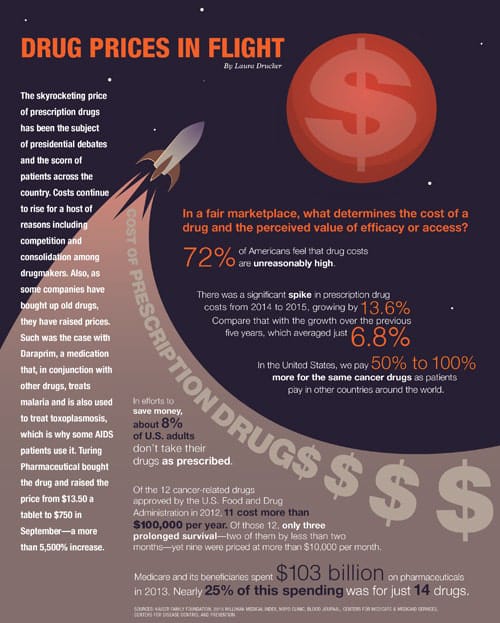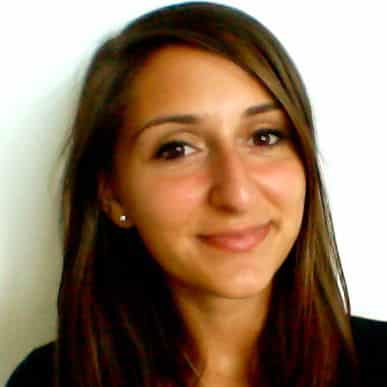Cost of prescription drug$$$
The skyrocketing price of prescription drugs has been the subject of presidential debates and the scorn of patients across the country. Costs continue to rise for a host of reasons, including competition and consolidation among drugmakers. Also, as some companies have bought up old drugs, they have raised prices. Such was the case with Daraprim, a medication that, in conjunction with other drugs, treats malaria and is also used to treat toxoplasmosis, which is why some AIDS patients use it. Turing Pharmaceutical bought the drug and raised the price from $13.50 a tablet to $750 in September—a more than 5,500% increase.
In a fair marketplace, what determines the cost of a drug and the perceived value of efficacy or access? 72% of Americans feel that drug costs are unreasonably high. There was a significant spike in prescription drug costs from 2014 to 2015, growing by 13.6%. Compare that with the growth over the previous five years, which averaged just 6.8%. In the United States, we pay 50% to 100% more for the same cancer drugs as patients pay in other countries around the world.
In efforts to save money, about 8% of U.S. adults don’t take their drugs as prescribed. Of the 12 cancer-related drugs approved by the U.S. Food and Drug Administration in 2012, 11 cost more than $100,000 per year. Of those 12, only three prolonged survival—two of them by less than two months—yet nine were priced at more than $10,000 per month. Medicare and its beneficiaries spent $103 billion on pharmaceuticals in 2013. Nearly 25% of this spending was for just 14 drugs.

Infographic by Erin Sullivan
Originally published in the Spring 2016 print edition.

Laura Mueller is a freelance writer, editor, and healthcare journalist whose work has appeared on Chicago Health, The Huffington Post, The Muse, and Cardinal Health’s Essential Insights. Get in touch at lmmueller55@gmail.com.










